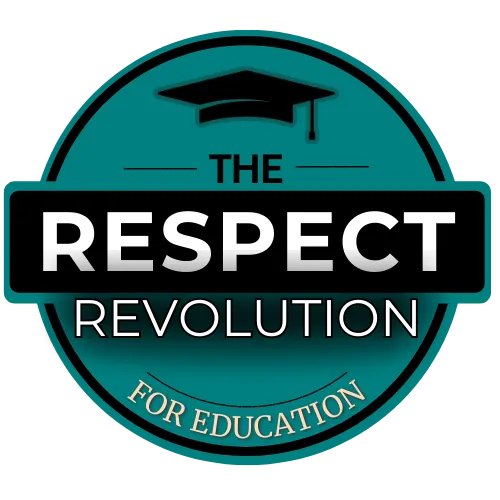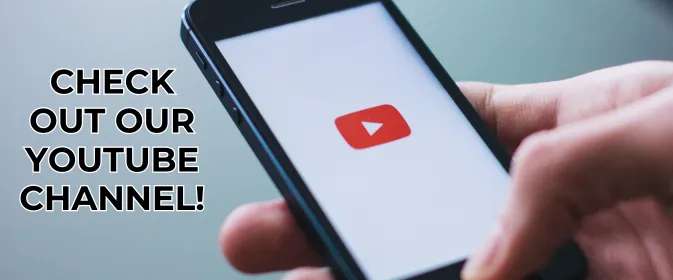
RESOURCE ARTICLE
How I Connected with My High School Students Using Music
Brad Reed | Director | The Respect Revolution | 26 September 2024
If you’re feeling disconnected from your students—so much so that you’re considering walking away from teaching—you’re not alone. Teaching, especially in high school, can feel overwhelming, and managing a classroom full of teenagers is no easy feat. But before you make any big decisions, let’s talk about a secret tool that could completely change the way you connect with your students:
music.
Why Music?
As writer Robert McCammon once said, "I believe music is the language of youth, and the more you can accept that as being valid, the younger your attitude gets." Music is a universal language that can break down barriers between you and your students. When used correctly, it fosters deeper relationships, helps create a more respectful environment, and reignites your passion for teaching.
But here's the catch: using music in your classroom can either work wonders or completely backfire, depending on how you go about it. Let’s dive into how you can use music to build connection, trust, and mutual respect with your students.
How to Use Music to Build Student Connections (Without It Backfiring)
Many teachers attempt to connect with students by playing music they think students will like, or worse, by playing songs that they believe will make them appear "cool." Here’s the truth: playing something like Pharrell Williams' “Happy” for the millionth time, or saturating your classroom with Taylor Swift memorabilia, won’t do much to foster those authentic connections.
In fact, students can smell inauthenticity a mile away, and nothing will make them disengage faster. So instead of trying to impress them with your knowledge of pop culture, try the opposite approach: show them that you’re open to their music and value their tastes.
4-Step Strategy for Using Music in Your Classroom
Here’s a simple system you can use to bring music into your classroom in a way that actually works:
1. Start a Conversation About Music
The first step is to have an open conversation with your students about music. Talk about the power it has to change a mood, connect people, and set a vibe for any environment. Share your own love for music, but let them know they are the experts . Ask them for recommendations!
By doing this, you’re immediately showing your students that you respect their opinions and that they have ownership over the classroom environment.
2. Create a Music Recommendation System
Once you’ve started the conversation, you need a system for gathering student recommendations. This can look a few different ways, depending on your style and classroom:
A section of your whiteboard dedicated to music requests
A simple lined paper taped to the wall where students can write suggestions
A question on your "getting to know you" survey asking for their favorite artists and songs.
This process gives students a voice in shaping the classroom atmosphere, making them feel valued and included.
3. Curate the List (It’s Not About Your Taste)
This is where things get a bit tricky. You’ll likely get a mix of great suggestions and some not-so-school-appropriate choices. Your job is to curate the list, not based on your personal taste, but on what’s appropriate and works for your classroom.
You’ll need to filter out inappropriate language or content, but beyond that, keep an open mind! Even if you don’t love every genre suggested (I’ve had my fair share of “video game” music that drove me crazy), the important thing is to show your students that you respect their preferences.
Tip: Use a streaming service like Spotify to easily create playlists and apply language filters where necessary.
4. Play the Music and Build the Habit
Now comes the fun part—playing the music! Start by playing songs during passing periods or at the beginning of class. The key is consistency. It might feel awkward at first, but over time, it will become second nature.
Here’s a quick system: Begin playing music as soon as one class ends, and stop it just before the next class begins. It sets a calm, engaging atmosphere and allows students to feel heard.
You’ll be amazed at how quickly students take ownership of the process, and how much it changes the classroom dynamic. It becomes strange not to have music playing!
Why This Strategy Works
When you use student-recommended music, you’re sending a powerful message: “I respect your opinions, and this classroom is a place where everyone’s voice matters.” Even students who may not love the song being played will recognize that the classroom is a shared space where diverse tastes are valued. For students whose music you do play, the impact can be huge—imagine how valued they’ll feel hearing their favorite song in your classroom.
One of the best parts of this strategy? It opens the door for you to share your own favorite music, too. Once your students see that you’re willing to listen to their music, they’ll be far more interested in earing what you enjoy.
What You Can Expect
By implementing this simple music strategy, you’ll:
Foster stronger connections with your students
Build a classroom environment filled with mutual respect
Transform those awkward, disengaged passing periods into opportunities for connection
Reignite your passion for teaching
This approach may sound simple, but it’s powerful. Music has the ability to bridge generational gaps, break down walls, and create a sense of community in your classroom that words alone often can’t.
If you’re interested in more ways to connect with your students and overcome classroom management struggles, I’ve put together a free Quick-Start Guide: Building Positive Relationships with High School Students.
Final Thoughts
Teaching is tough, but it doesn’t have to drain you. Music can be the key to recharging your classroom environment and, ultimately, your career. Give this strategy a try—your students (and your sanity) will thank you for it!

PRIVACY POLICY | TERMS & CONDITIONS | CONTACT US
© COPYRIGHT 2024. THE RESPECT REVOLUTION. ALL RIGHTS RESERVED
Stay connected and join the movement!





